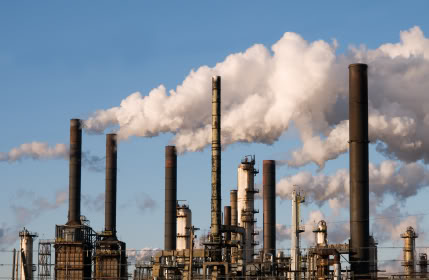ALL4’s: Is That Your Final Answer?
Last Month’s Answer and Winner:
The correct answer to April’s “Is That Your Final Answer” is David Chetkowski and Annalise Matulewicz. David Chetkowski was the first employee hired by ALL4 and began work the first day of business. Annalise Matulewicz’s hiring in March made her the most recent employee (however, since March 31, ALL4 has welcomed Marc Scheuring to our Kimberton, PA office, and Susie Bowden and Julie Maltese to our Columbus, GA office). Although no one gave the correct answer, Amy Earley answered John Egan and Annalise Matulewicz, and since John Egan did begin some project work a week before ALL4 officially opened for business, we are crediting Amy with the correct answer.
Question: 
Our May “Is That Your Final Answer” question is as follows. We have always enjoyed working for our clients in the pulp and paper industry. The facilities are very complex, but are remarkable for all of the recycling and repurposing that occurs. Many years ago as we were going through a tour of one of our pulp and paper clients’ mills, the plant’s environmental manager casually pointed to a large vat and mentioned that the contents of the vat made its way into a very popular, edible summer-time treat. What cool-tasting summer-time treat contains a by-product of the pulp and paper industry? For a hint, see the May 4, 2011 Wall Street Journal article in Section D.
Answer:
Please e-mail your answer to final.answer@all4inc.com. Include in the e-mail your name, answer, and address (to receive your prize).
The final answer feature of 4 The Record is designed to test your knowledge across the environmental field, quiz you on the building blocks of air quality rules, stump you on ALL4 general trivia, and challenge you with brain teasers that have perplexed us. The first correct answer e-mailed to us will qualify the respondent for free ALL4 gear and will enter the winner in our end-of-the year “Final Answer Championship.” The subsequent month’s 4 The Record will identify the winner and the correct answer from the previous month’s question. You must be an active subscriber of 4 The Record to win a monthly prize and be eligible for the championship prize. ALL4 employees and family members are not eligible to compete. Hope you enjoy this feature and good luck!
Electronic Greenhouse Gas Reporting Tool (e-GGRT) Training and Testing Happening Now
U.S. EPA has started to unveil the long-awaited Electronic Greenhouse Gas Reporting Tool (e-GGRT) to the user community. Throughout the month of May, individuals who will be required to use e-GGRT to report their facility’s greenhouse gas (GHG) emissions can participate in a series of webinars to receive instruction from U.S. EPA on how to use the tool to report under different source category subparts of 40 CFR Part 98 Mandatory Reporting of Greenhouse Gases. As of the beginning of May, U.S. EPA had scheduled webinars focused on 13 of the 25 source category subparts under which reporting for the 2010 calendar year is required. There is also the possibility that additional webinars will be scheduled based on user interest. Up-to-the-minute information on which subparts are offered and when the webinars are scheduled can be found on U.S. EPA’s website.

Facilities that are required by 40 CFR Part 98 to report their 2010 GHG emissions must do so no later than September 30, 2011. ALL4 Climate Change staff are participating in the training webinars for key subparts and spending a significant amount of time playing in the e-GGRT sandbox. ALL4 is therefore well positioned to assist reporting facilities with the efforts required to submit GHG emissions reports, which must begin later this summer.
Another Update to AERMOD!!

The Forgotten NAAQS
With all of the excitement surrounding the implementation of the new 1-hour National Ambient Air Quality Standards (NAAQS) for sulfur dioxide (SO2) and nitrogen dioxide (NO2), it’s easy to forget that U.S. EPA is also in the process of reviewing the primary NAAQS for ozone and carbon monoxide (CO), as well as the secondary NAAQS for NO2 and SO2. A brief update on these regulations follows.
8-Hour Ozone NAAQS: The current ozone NAAQS of 75 parts per billion (ppb) was promulgated in March 2008. On January 6, 2010, U.S. EPA proposed a more stringent 8-hour NAAQS in the 60-70 ppb range. U.S. EPA is currently targeting a finalization date of July 29, 2011 for the reconsidered ozone NAAQS to allow time for public comment and input from the Clean Air Scientific Advisory Committee (CASAC).

Secondary NO2 and SO2 NAAQS: The current secondary NO2 standard is 53 ppb on an annual arithmetic average basis, while the current secondary SO2 standard is 0.5 ppm on a 3-hour basis. U.S. EPA is in the process of reviewing these standards and is targeting to have proposed standards by July 12, 2011 and final standards by March 20, 2012.
A New Pennsylvania RACT Rulemaking is on the Way
The Pennsylvania Department of Environmental Protection (PADEP) has announced that they will be revising their Reasonably Available Control Technology (RACT) regulations in 25 Pa. Code Chapter 129 for control of major sources of nitrogen oxides (NOx) and volatile organic compounds (VOC). The original RACT regulations were effective in 1994 as a Federal requirement for Pennsylvania to demonstrate reasonable further progress (RFP) toward attaining the ozone National Ambient Air Quality Standard (NAAQS). Since PADEP was not successful in demonstrating to U.S. EPA that the existing RACT determinations were still sufficient, new regulations are required. Greater 
Introducing Slade’s Corner
U.S. EPA has once again ventured into new, and this time somewhat troubling, territory. Lisa Jackson, U.S. EPA Administrator and previous official with the State of New Jersey, has proposed to grant a petition filed by the State of New Jersey to require an existing facility in the Commonwealth of Pennsylvania to significantly reduce its emissions of sulfur dioxide (SO2). This action is being taken under an infrequently used provision of the Clean Air Act (CAA), referred to as a Section 126 Petition. This particular action will be the first implementation of the brand new SO2 National Ambient Air Quality Standard (NAAQS) on an existing facility that is not otherwise subject to an air quality permitting action. This is troubling because the action being proposed would be well in advance of the normal process detailed in Section 110 of the CAA for implementing new NAAQS. This action will be well before Pennsylvania is required to develop its State Implementation Plan (SIP) for SO2 attainment and to submit that SIP to U.S. EPA.

Slade’s Corner is a new regular column appearing in ALL4’s 4 The Record. John Slade is a Sr. Consultant with ALL4 and spent many years as a regulator with the Pennsylvania Department of Environmental Protection (PADEP), including nearly 14 years as Chief of the Division of Air Quality Permitting. Want to reach John or suggest an upcoming topic for Slade’s Corner? Contact John atjslade@all4inc.com or 717.822.0009. Slade’s Corner is an opinion-based column, and its content does not necessarily represent the opinion of ALL4 as a whole.
Note from the author: This article is based on my candid opinions as of the date it was written and I reserve the right to change my mind as information evolves!
All This Has Happened Before, and It Will Happen Again…
As every avid reader of 4 The Record knows, U.S. EPA published four (4) new rules that are all interrelated and that will affect boilers and process heaters everywhere. Two of the four rules are intended to reduce emissions of toxic air pollutants from boilers and process heaters located at major sources of hazardous air pollutant (HAP) emissions (Major Source Boiler MACT), as well as area sources of HAP emissions (Area Source Boiler MACT). In addition, U.S. EPA has finalized a rule to reduce toxic air pollutants from Commercial and Industrial Solid Waste Incinerators (CISWI), and has published a new definition of solid waste (DSW Rule). Because U.S. EPA was forced by a court order to hurriedly finalize the Boiler MACT rules and the CISWI rules, these three final rules contain requirements that the public has not had an opportunity to comment on. Within the preambles to these three rules, U.S. EPA has stated that the Boiler MACT rules and CISWI rules will be open for reconsideration. U.S. EPA also made it known that the DSW Rule is final and will not be reconsidered.



